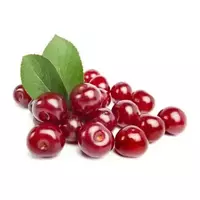Felt cherry

Felt cherry (Prunus tomentosa or Cerasus tomentosa) is a species of common cherry that now belongs to the genus Plum. The homeland of this plant is China, Mongolia and Korea, where it is still found in the wild today. Nevertheless, as a culture, felt cherries have become widespread since the mid-20th century in gardens in North America and the temperate zone of Europe.
Felt cherry is a shrub on which, as a rule, there are several trunks from one and a half to two and a half meters high. The leaves of this cherry are dark green in color, they are oval-shaped, strongly corrugated, pubescent below, with a pointed end. The flowers of the felt cherry are very attractive - snow-white, although there are white-pink colors, even less often pink.
The fruits of felt cherries are represented by oval bones covered with a small cannon, red when ripe, sweet (sometimes with sour) taste, but somewhat smaller compared to ordinary cherries. Depending on the region of growth, the fruits of felt cherries ripen during July, while the plant begins to bear fruit abundantly in the third year. It is noteworthy that the yield of felt cherries during the period of complete fruiting can be up to eight kilograms of berries from one bush.
Juicy mature berries of felt cherries can be used for culinary purposes in a similar way to the fruits of ordinary cherries - most often they are made into aromatic jam, tasty compote, rich sweet juice, appetising weed or unusually healthy kvass. In addition, many people like felt cherries in sugar, jam, mousse, jelly, marmalade, syrup, morse, tincture or pickled felt cherries.
By the way, the useful properties of felt cherries are no less valuable than its gastronomic qualities. For example, in bone nuclei, the fatty oil content varies from 17 to 35%, the substance comprising linoleic acid which has an anti-atherosclerotic effect. But you need to use the kernels of felt cherries with caution due to the fact that the glycoside amygdalin contained in its bones in the intestines is broken down to hydrogenic acid, which is poisonous.
In addition, the beneficial properties of felt cherries are due to the presence of glucose, fructose, vitamin C, P, B, PP, apple and citric acid, pectins and tannins in this berry. There is more iron in felt cherries than in apples.
The consumption of felt cherries is indicated in cases where it is necessary to improve appetite, regulate intestinal activity, stabilize the digestion of animal proteins and fats. In addition, this berry is useful for low blood production, it contributes to the regulation of blood clotting, reducing the growth of atherosclerotic plaques, reducing high pressure, as well as preventing the development of heart attack and stroke.
felt cherry 52 kCal
Energy value of felt cherries (Ratio of proteins, fats, carbohydrates - ju):
Proteins: 0.8 g (~ 3 kCal)
Fats: 0.2 g (~ 2 kCal)
Carbohydrates: 10.6 g (~ 42 kCal)
Energy ratio (bj | y): 6% | 3% | 82%
 Español
Español Français
Français Português
Português Русский
Русский 简体中文
简体中文 繁體中文
繁體中文 日本語
日本語 한국어
한국어 العربية
العربية Türkçe
Türkçe Қазақ
Қазақ Deutsch
Deutsch Italiano
Italiano Українська
Українська
